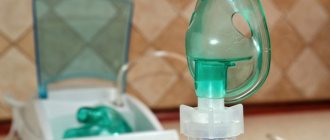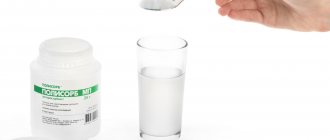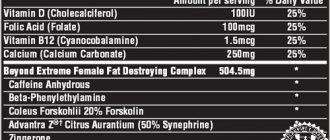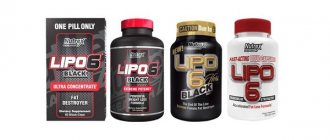How to take creatine correctly?[edit | edit code]
For those who don't like to read
Creatine FAQ. Real scientific facts vs manufacturers' speculations. Author: Boris Tsatsouline
Creatine monohydrate is one of the most researched and effective substances in bodybuilding, and despite this, many questions regarding the optimal method of taking it remain unclear. The constant emergence of new forms, the cunning of manufacturers and the desire of authors to distinguish themselves by originality give rise to many erroneous theories. When creating this article, it was necessary to rework more than 50 independent studies and scientific papers in order to clearly determine the best way to take creatine.
We will try to tell you not only about how to take creatine monohydrate correctly, but also to refute false positions on this issue.
Optimal dosage regimen[edit | edit code]
These schemes are most effective for every person; they are suitable for supplements from any manufacturer, regardless of the form (powder, capsules or solution).
Very often, manufacturers do not care about drawing up instructions, indicating completely crazy modes. We decided to give a digest of our work at the beginning of the article, and if you are interested in a detailed rationale, you can find it below.
- Without loading (recommended)
: take 5-6 g, every day.
On training days
, creatine should be taken after training, along with a protein shake, or gainer, or amino acids (at least 5 g), or with sweet juice.
On rest days
, in the morning with a protein shake, or gainer, or amino acids, or with sweet juice. The course lasts 2 months, then you need to take a break for 3-4 weeks. - Loading
: in the first week, take 5 g of creatine, 4 times a day in between meals (on training days, one of the servings should be consumed after training), along with a protein shake or gainer, or amino acids (at least 5 g), or washed down with sweet juice. After 5-6 days, reduce the dose to 2 g and take 1 time per day, after training or in the morning on rest days, along with a protein shake, or gainer, or amino acids, or with sweet juice. The course lasts 1 month, then you need to take a break for 3-4 weeks.
The volume of liquid in which the additive is mixed or washed down must be at least 1 glass.
At what age can you drink?
See also:
Creatine: how to take and why
Training teenagers need to know at what age they can take creatine. The question of the advisability of using sports nutrition should be agreed upon with the trainer and pediatrician.
The lower age limit is 14 years. From the age of 16, an athlete can, based on the advice of a trainer, independently select creatine, the appropriate form and regimen of administration (for example, regimens for taking monohydrate with and without loading).
Be sure to check out:
Creatine: properties of the supplement and its importance in sports nutrition. Expiration date and storage of creatine. Is it possible to mix BCAA with creatine and what can this lead to? Creatine and protein: rules for taking it together
When to take creatine? Before or after training[edit | edit code]
One study found that creatine is best absorbed when taken after a workout[1] as metabolic changes in the body and increased blood flow contribute to this to the greatest extent. It should be noted that pre-workout time is less preferable for several reasons: water balance may be disrupted and because transport systems are wiser to take after exercise.[2] The exception is the pre-workout complex.
A 2013 study from Nova Southeastern University[3] provided definitive evidence that the best time to take it is immediately after exercise, not before. This is relevant both for gaining muscle mass and for increasing strength indicators.
It is also not advisable to take creatine during training. In addition, studies have shown that taking creatine during training makes it more difficult to perform exercises, as transient dehydration develops.[4]
On rest days, creatine is best absorbed in the morning, scientists believe this is due to the high concentration of growth hormone at this time of day, which improves transport.[5]
How long should I take creatine? Schemes[edit | edit code]
Another very difficult question that has not been resolved, despite dozens of experiments conducted with animals and people. In the work of Burke DG[6], scientists studied the 24-hour release of creatine and its breakdown product creatinine from the body and came to the conclusion that no more than 50 mg/kg of the supplement is absorbed per day, the rest is excreted in the urine. This means that there is no point in taking more than 5-7 g of creatine per day.
Muscle creatine levels after 6 days of loading
Loading[edit | edit code]
One thing to remember here is the very popular creatine loading. This regimen involves taking 20 g of the supplement per day (in four doses of 5 g each). The optimal duration of this phase, as studies have shown, is 4-6 days, after which the increase in creatine concentration in the muscles stops (since the cells are completely saturated with it) and it is enough to take about 2-3 g per day as a maintenance dose. It should be emphasized that muscle creatine levels remained high even after 12 weeks of maintenance dosing. [7]
Later, new research was done that showed that the loading phase is not at all necessary.[8] Conclusion:
loading 20 g per day for 6 days and a subsequent maintenance dose of 2 grams per day after a month of use leads to the same result as taking a supplement of 3 g every day, without loading.
Three years later, another study showed that daily supplementation of 5 g per day without a loading phase resulted in significant increases in strength and muscle mass.[9]
Should I use download or not?
Based on scientific conclusions, there is no difference in the final result with any method of administration. However, there are several factors that should be discussed as they may influence the choice of tactics:
Cycling[edit | edit code]
The cyclic scheme has become popular recently thanks to an article by Paul Krieb.
The author writes: The traditional loading phase invariably overloads the blood with creatine, bombarding the muscles with high concentrations of it.
In this case, creatine transporters impair their ability to penetrate cell membranes! It takes quite a long time for their performance to return to normal. In addition, such a return can only occur if the concentration of creatine outside the cells decreases. It is then suggested to take the supplement for 3 days, followed by a 3-day break. The whole idea is based on three studies, two of which were carried out by himself, and the third by Luc JC van LOON[10], in the conclusion of which scientists come to the conclusion that constant intake of creatine leads to a decrease in its concentration after 4 weeks, presumably due to gene suppression transporters. This work made a lot of noise and caused a new wave of discussions.
What is Paul Krieb's mistake and the shortcoming of cyclic schemes?
- Luc JC et al found a decrease in muscle concentrations only after 4 weeks and not after 3 days.
- Much more research has shown that a maintenance dose can maintain high concentrations of creatine in muscles for a long time. Thus, the work referred to by Paul Krieb can be considered erroneous.
- Tarnopolsky M and Parise G [11] conducted a special study that showed that creatine monohydrate does not suppress the synthesis and activity of transporters in humans even after 4 months of daily use.
The above allows us to conclude that cyclic dosage regimens are inappropriate.
Low dosages[edit | edit code]
A new study [12] published in the journal Nutrition in 2010 decided to test the effects of creatine in low dosages. 20 healthy men and women received the supplement in an amount of 0.03 g per 1 kg of body weight, an average of 2 g per day. Scientists found that after 6 weeks, the subjects did not change in lean muscle mass, maximum strength, percentage of fat and fluid volume in the body. From this we can draw an unambiguous conclusion: that doses should not be low, otherwise the effect will be minimal or absent altogether.
Particular attention should be paid to creatine supplements in capsules, where manufacturers often make the dosage insufficient.
Is there a difference in the time of taking powder and capsules?
The emergence and widespread distribution of the capsule form of the supplement raised many questions from athletes. Doubts arose regarding the differences in the method and rules for taking the product in 2 different forms.
In practice, there are practically no differences in use. Creatine in capsule and powder form is an identical substance, which in the second case is placed in a gelatin shell. The only difference is the addition of additional ingredients to the capsule form (for example, an active substance with an improved transport system). In other options, there can be no difference between taking supplements - capsules are a convenient option for use on the go, without dissolving in liquid.
Options for proven supplements in capsules and powder:
Optimum Nutrition, Creatine 2500 Capsules, 100 Capsules
Price – ₽1,091.25
Buy from a partner
Muscletech, Essential Series, Platinum 100%, Creatine, Unflavored, 14.11 oz (400 g)
Price – ₽871.94
Buy from a partner
The only nuance in taking capsules is calculating the correct dosage. To do this, you should specify in the manufacturer’s description the specific content of the substance in one capsule, and not just its weight.
What should I take creatine with?[edit | edit code]
It is known that the most “complex” pharmacodynamic stage of creatine is its transport from plasma to muscle cells. It is at this stage that most of the creatine is wasted. It has been observed that some substances affect the absorption of the supplement by muscles. The most effective intermediary that accelerates transport is insulin.[13] This hormone has a pronounced anabolic effect and causes muscles to absorb almost all nutrients, including creatine.
To improve the absorption of the supplement, insulin secretion in the body can be sufficiently stimulated by consuming:
- fast carbohydrates 10-20 g (in the form of sweet juice or adding sugar)
- fast protein 20-30 g (improves absorption as well as carbohydrates[14])
- amino acids 5-15 g
The effectiveness of other transport systems (taurine, CLA, arginine, etc.) is in doubt. There are already combined products: creatine with a transport system
It must be remembered that creatine must be washed down (or stirred) with a sufficient amount of liquid to neutralize the dehydration effect and speed up transport.
Also, the absorption of creatine is positively influenced by the administration of anabolic and other hormones: growth hormone[15], thyroxine[16], anabolic steroids and insulin.[17]
Food Sources of Creatine
Various types of meat and fish - pork, beef, tuna, salmon, herring, cod - are very rich in creatine, but it can be destroyed during cooking, being sensitive to the heat treatment necessary to destroy pathogenic microorganisms.
Small amounts of creatine are found in milk (0.11 grams per liter) and cranberries (0.002 grams per kilogram).
This makes creatine supplements a much more convenient and effective way to provide your body with a much-needed boost of energy.
How long does the course last?[edit | edit code]
Based on the studies already cited above, most indicate that creatine can be taken on an ongoing basis. However, the studies that reveal the phenomenon of downregulation of cellular transporters are alarming.[18] Theoretically, this could lead to decreased muscle sensitivity to the supplement. According to average data, this occurs after approximately 2 months of daily use.
Thus, after completing a 1.5-2 month course, you need to take a break for 3-4 weeks, this is enough to completely restore sensitivity.[19]
Creatine for cutting: yes or no
When losing weight and playing sports, the question becomes whether creatine can be taken on a dry diet. There are quite good reasons to include the supplement in your diet when losing weight:
- endurance indicators increase, which is necessary to burn more calories;
- increases strength and performance during training when there is an energy deficiency from food;
- activates the growth of pure muscle without fat, which improves the visual characteristics of the body.
There is only one possible disadvantage - monohydrate in powder or capsules retains liquid in muscle tissue. Therefore, the product is not suitable for drying before competitions or any competitions with weigh-ins.
Ordinary losers should not worry - all excess water will go away immediately after completing the course.
Notes[edit | edit code]
- Candow DG, Chilibeck PD., Timing of creatine or protein supplementation and resistance training in the elderly. 2008 Feb;33(1):184-90.
- Preen D, Dawson B, Goodman C, Lawrence S, Beilby J, Ching S. Pre-exercise oral creatine ingestion does not improve prolonged intermittent sprint exercise in humans. J Sports Med Phys Fitness. 2002 Sep;42(3):320-9.
- https://www.jissn.com/content/10/1/36
- Preen D, Dawson B, Goodman C, Lawrence S, Beilby J, Ching S. Pre-exercise oral creatine ingestion does not improve prolonged intermittent sprint exercise in humans. J Sports Med Phys Fitness. 2002 Sep;42(3):320-9.
- Odoom JE, Kemp GJ, Radda GK. The regulation of total creatine content in a myoblast cell line. Mol Cell Biochem 1996 May 24;158(2):179-88
- Burke DG, Smith-Palmer T, Holt LE, Head B, Chilibeck PD. The effect of 7 days of creatine supplementation on 24-hour urinary creatine excretion. J Strength Cond Res 2001 Feb;15(1):59-62
- Department of Kinesiology/Center for Sports Medicine, The Pennsylvania State University, Performance and muscle fiber adaptations to creatine supplementation and heavy resistance training. Med Sci Sports Exerc. 1999 Aug;31(8):1147-56.
- Hultman E, Soderlund K, Timmons JA, Cederblad G, Greenhaff PL. — Muscle creatine loading in men. J Appl Physiol. 1996 Jul;81(1):232-7.
- The Journal of Strength & Conditioning Research: Vol. 13, No. 3, pp. 187
- Luc JC van LOON, Audrey M. OOSTERLAAR, Fred HARTGENS, Matthijs KC Effects of creatine loading and long-term creatine supplementation on body composition, fuel selection, sprint and endurance performance in humans. Clinical Science (2003) 104, (153–162)
- Tarnopolsky M, Parise G Acute and moderate-term creatine monohydrate supplementation does not affect creatine transporter mRNA or protein content in either young or elderly humans. Department of Medicine (Neurology and Rehabilitation), McMaster University, Hamilton, ON, Canada. Molecular and Cellular Biochemistry 2003 Feb;244(1-2):159-66.
- Rawson et al, 2010
- Odoom JE, Kemp GJ, Radda GK. The regulation of total creatine content in a myoblast cell line. Mol Cell Biochem 1996 May 24;158(2):179-88
- Stinge, GR, Simpson, EJ and Greenhaff, PL (September 2000) Protein- and Carbohydrate-induced augmentation of whole body creatine retention in humans. Journal of Applied Physiology Volume 89: 3: pages 1165-1171.
- Odoom JE, Kemp GJ, Radda GK. The regulation of total creatine content in a myoblast cell line. Mol Cell Biochem 1996 May 24;158(2):179-88
- Odoom JE, Kemp GJ, Radda GK. The regulation of total creatine content in a myoblast cell line. Mol Cell Biochem 1996 May 24;158(2):179-88
- Stinge GR, Simpson EJ, Greenhaff PL. Protein- and carbohydrate-induced augmentation of whole body creatine retention in humans. J Appl Physiol 2000 Sep;89(3):1165-71
- Guerrero-Ontiveros ML, Wallimann T. Creatine supplementation in health and disease. Effects of chronic creatine ingestion in vivo: down-regulation of the expression of creatine transporter isoforms in skeletal muscle. Institute for Cell Biology, Swiss Federal Institute of Technology, ETH-Honggerberg, Zurich. Mol Cell Biochem 1998 Jul;184(1-2):427-37
- Rawson ES, Persky AM, Price TB, Clarkson PM. Effects of repeated creatine supplementation on muscle, plasma, and urine creatine levels. J Strength Cond Res. 2004 Feb;18(1):162-7. Related Articles, Links











